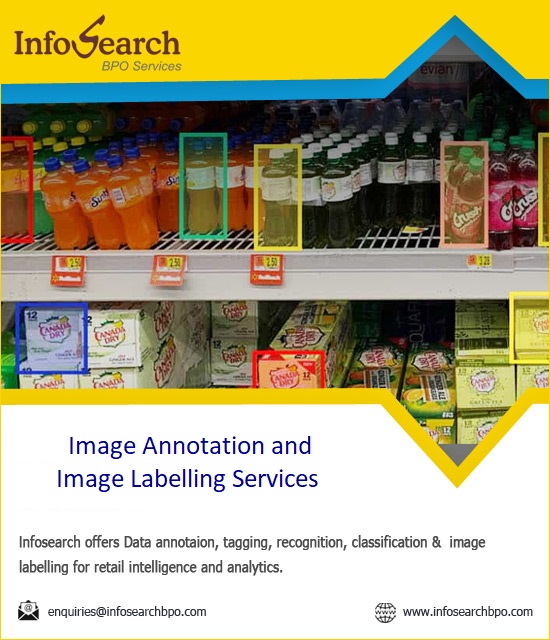Infosearch is a provider of various data annotation services, including image annotation and image labelling services. We provide annotation services for machine learning and AI to various industries like agriculture, e-commerce, retail, medicine, autonomous vehicles, robotics, and more. Contact us to outsource image annotation and labelling services to Infosearch.
In the world of artificial intelligence, specifically computer vision, we rely on humans to teach machines how to “see. ” This involves enriching images with data, but there’s a distinction between two key methods: content description and content annotation.
Thus, when it comes to the field of computer vision, the terms image labeling and image annotation are often considered to be synonymous but there are some subtle distinctions. Here’s a breakdown to help you understand them better:
Image Labeling:
Image labeling works like tagging, where you attach suitable keywords to the image. In its simplest sense, it aims at the classification of problems at a low level of detail.
* Focus: In regard to image labeling, this is mainly concerned with the determination of which objects, or scenes, are in an image as well as how they are categorized.
* Process: This occurs through linking appropriate tags or words to the overall image or individual portions of the said image. These labels are useful for giving a rough understanding of what an image is comprised of.
* Example: Assigning the name “cat” to an image of a feline or the name “beach, sunset” to an image of a broad landscape.
Image Annotation:
The image annotation goes a little deeper than the others. It is also similar to providing a description of a picture with words, which people know exists but cannot be described fully or in its entirety. Thus, annotators might box the cat, indicate where it is, say that it is ginger, or even say that it is sleeping. This additional context is beneficial for machines.
* Focus: Let me expound a little bit on what it means to do image annotation. Image annotation is not a simple classification. It entails extending the scoped image by adding more detailed features and a whole new set of features for the machines to identify.
* Process: Some of what it may entail may be:
Bounding box detection, where boxes are drawn around the particular object depicted in the context.
Charging segmentation masks in order to mark the exact location and extent of the objects on the cards.
Recognizing which part of an object corresponds to which attribute of it, such as its color, size, or pose.
Listing down the caption or description of the content in the picture.
* Example: labeling an image of a car with a rectangular, tight frame around the car and labelling its colour as ‘red’.
In essence:
It is image tagging, where we mark an image for a special meaning with one or more keywords.
Annotation is similar to providing lengthy comments or detailing instructions about the image.
Choosing the right approach depends on the specific task:
* If the goal you are pursuing is more limited and involves training a model to recognize general categories of objects, then image labeling should be enough.
* If it is expected that your model will need to locate the exact location and features of an object, then image annotation must be implemented.
Thus, while there are differences between image labeling and annotation, they provide valuable information on training AI models to improve their perception of and interpretation of the visual world.
Visit Infosearch Website and outsource your annotation services.








Recent Comments